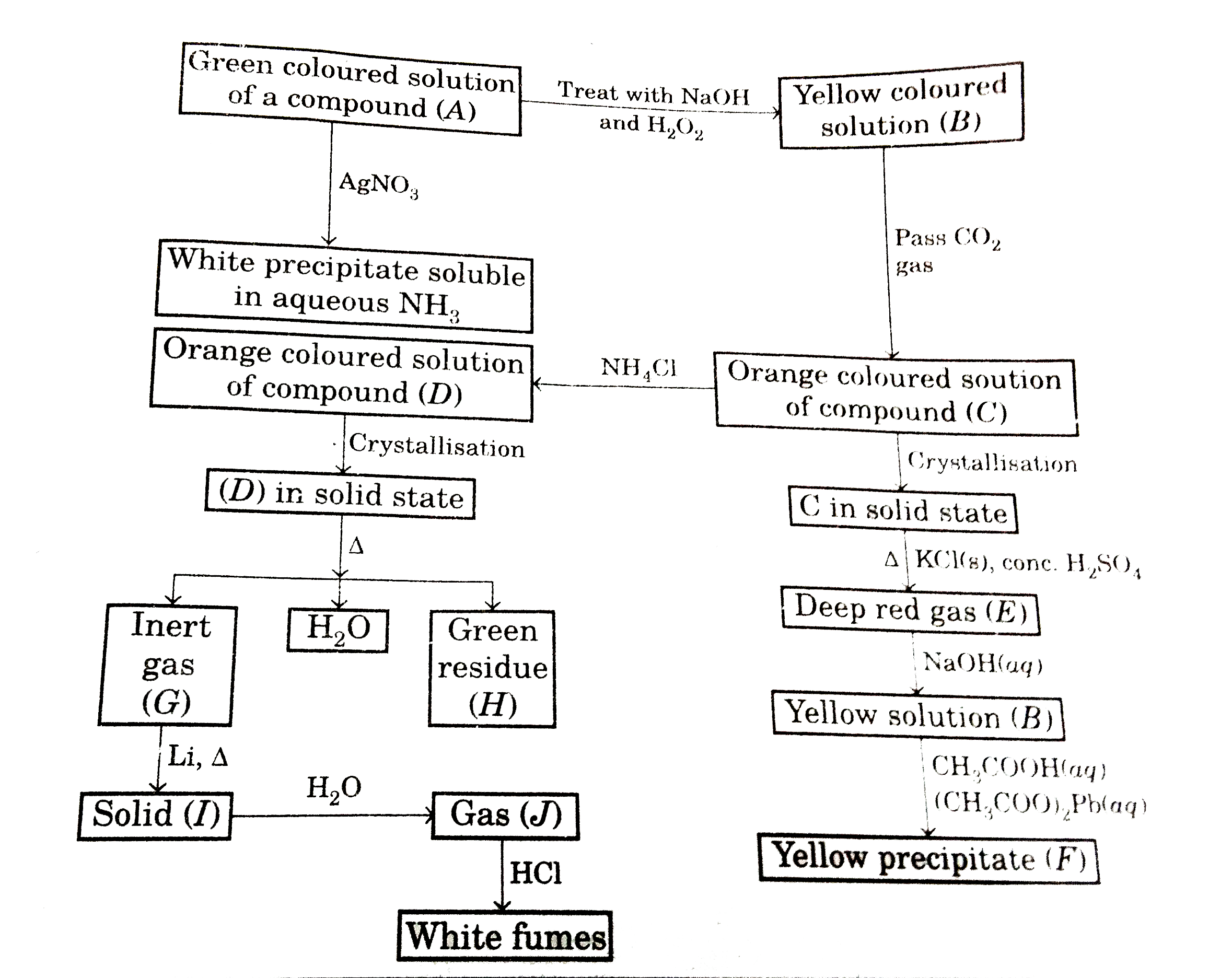Go through the following flow sheet. Based on, it answer the questions given at the end of it.

Compound (A) is:
A
CuCI2
B
FeCI3
C
FeCI2
D
CrCI3
Text Solution
The correct Answer is:D
((A)→CrCI3,,(B)→Na2CrO4,),((C)→Na2Cr2O7,,(D)→(NH4)2Cr2O7),((E)→CrO2CI2,,(F)→PbCrO4,),((G)→N2,,(H)→Cr2O3,),((I)→Li3N,,(J)→NH3)
|
Topper's Solved these Questions
- SALT ANALYSISBOOK - GRB PUBLICATIONCHAPTER - SALT ANALYSISEXERCISE - Comprehension 19
1 Videos
- SALT ANALYSISBOOK - GRB PUBLICATIONCHAPTER - SALT ANALYSISEXERCISE - Comprehension 20
1 Videos
- SALT ANALYSISBOOK - GRB PUBLICATIONCHAPTER - SALT ANALYSISEXERCISE - Comprehension 17
1 Videos
- S BLOCK ELEMENTSBOOK - GRB PUBLICATIONCHAPTER - S BLOCK ELEMENTSEXERCISE - SUBJECTIVE TYPE
9 Videos
- THERMODYNAMICSBOOK - GRB PUBLICATIONCHAPTER - THERMODYNAMICSEXERCISE - All Questions
704 Videos
Similar Questions
Knowledge Check
Go through the following flow sheet. Based on, it answer the questions given at the end of it.

Compounds D,E and F respectively are:ADEF(NH4)2CrO4CrO2CI2PbCrO4BDEF(NH4)2CrO7CrO3PbCrO4CDEF(NH4)2Cr2O7CrO2CI2PbCrO4DDEF(NH4)2CrO4CrO3PbCrO4Go through the following flow sheet. Based on, it answer the questions given at the end of it.

Formation of (F) using (G),KCI (solid) and concentrated H2SO4 is called:Aredox test of Cr2O2−7Bchromy-chloride test of CI−Cchromyl-chloride test of Cr3+Dnone of the above is correctGo through the following flow sheet. Based on, it answer the questions given at the end of it.

Yellow coloured solution (B) is of:ANa2CrO4 formed by oxidation of Cr3+ by H2O2 in alkaline mediumBFeCI2 formed by reduction of FeCI3 by H2O2CFeCI3 formed by oxidation of FeCI2 by H2O2DCu(OH)2 formed by precipitation of CuCI2 by H2O2/NaOH
Go through the following flow sheet. Based on, it answer the questions given at the end of it.

Select correct statement(s):
View SolutionGo through the following graph and answer the following questions.

Which of the following reaction is true?
View SolutionGo through the following graph and answer the following questions.

Which of the following reaction is true?
View SolutionFollowing two graphs are based on the conductometric titration of acid-base reaction. Answer the questions given at the end of it.

Select correct statement,
View SolutionGo through the following graph and answer the following questions.

At what approximate temperature, zinc and carbon have equal affinity for oxygen.
View Solution

